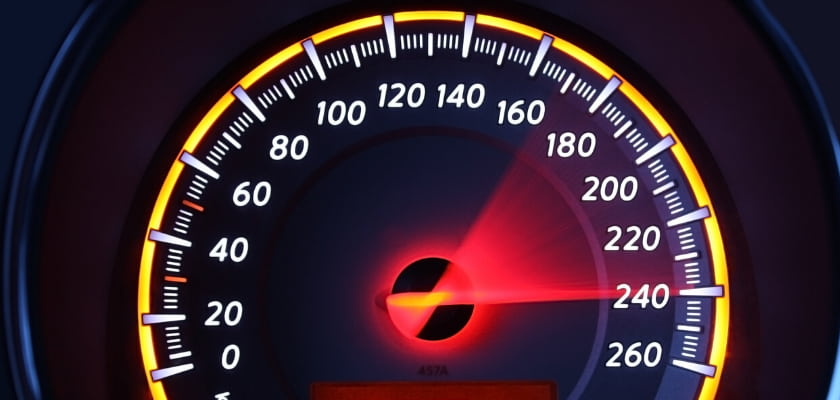Gunning It: Six Hard Facts on Why Hard Accelerations Should Be Avoided

We’ve all heard them on the highway or our local side streets. They’re usually accompanied by a loud “vroom” or a revving sound. They’re hard accelerations. Yes, they’re big fuel guzzlers, but that just scratches the surface of why hard accelerations are problematic, said Lytx VP of Safety Services Del Lisk. Here are Lisk’s top reasons why hard accelerations can pose a serious challenge for fleet safety programs and their managers.
1. It’s costly from a fuel efficiency standpoint
Hard, or rapid, accelerations add stress to the engine and transmission, burning fuel more quickly. When drivers “gun it,” the vehicle sees that as a request for a power boost, burning more fuel than the driver would actually need to reach the same speed more gradually.
The U.S. Department of Energy says that driving habits such as hard accelerations and hard braking can lower gas mileage between 15 percent and 30 percent at highway speeds and between 10 percent and 40 percent in stop-and-go traffic. Citing a study from the Institute of Transportation Studies at University of California, Davis, the site encourages the use of driver feedback devices, saying they can help drivers improve fleet fuel management by about 3 percent and can improve gas mileage by about 10 percent.
2. Those who make sudden starts often practice hard braking, too
Rapid accelerations are a sign of aggressive driving, and aggressive driving habits create risk. Drivers who brake suddenly are making themselves vulnerable to a rear-end collision.
“A friend of mine drove like that,” Lisk said. “Three times in a year she got hit from behind. She asked me to go out on the road with her. I saw that she was always giving the driver behind her less time and space to stop. So yes, hard braking increases the potential for a rear-end collision.”
According to 2017 Lytx data, Waste drivers are the worst offenders when it comes to hard accelerations. In fact, of the top 2,000 drivers in the Lytx database with the greatest frequency of hard acceleration behavior in the last 60 days, nearly half of them—48 percent—worked in the Waste segment. Twenty-seven percent of them worked in trucking, and 9 percent of them worked in Distribution. The Services segment had the fewest drivers who exhibited hard acceleration behavior in the last 60 days—just 1 percent of them.
3. Hard accelerations and hard braking together cause wear and tear on a vehicle
A driver who rapidly accelerates often has to brake harder. Drivers who accelerate rapidly during city driving tend to speed to the next light, having to brake harder over a shorter distance, Lisk explained. Braking harder can cause brakes to overheat, causing brake damage and reducing their lifespan. Hard braking also causes wear and tear on a vehicle in general, so vehicle maintenance is more expensive.
4. They’re bad for the environment
Hard accelerations burn more fuel, so they release more pollutants and more carbon into the air.
5. For drivers carrying passengers, hard accelerations put passengers at risk
Passengers could fall out of their seats, so there’s potential for a passenger claim, especially in transit. It gives the opportunity for passengers to make a claim, whether it’s warranted or not.
6. In trucking and distribution vehicles, hard accelerations can cause cargo to shift
Any time your load shifts, products can break. That costs your company money and causes conflict between you and your customer. It puts fleets at risk for losing a client and being liable for product damages.
Want more on fuel management? Here are four driver behaviors that consume the most fuel and what to do about them.
